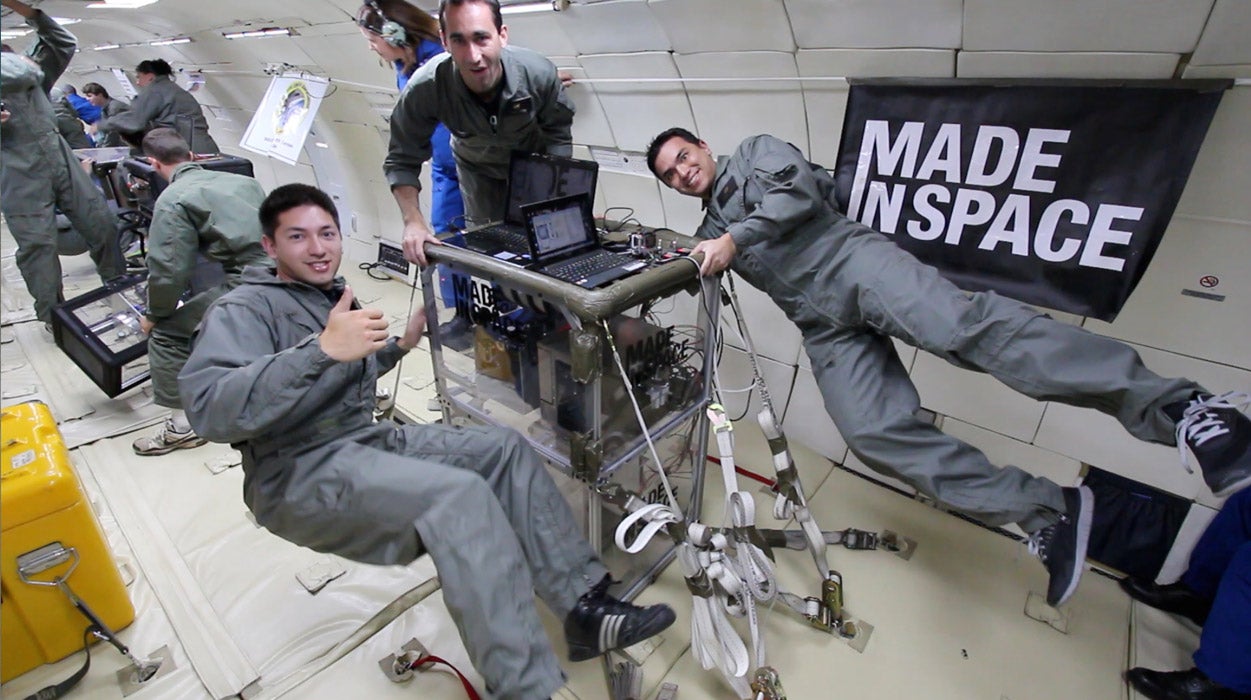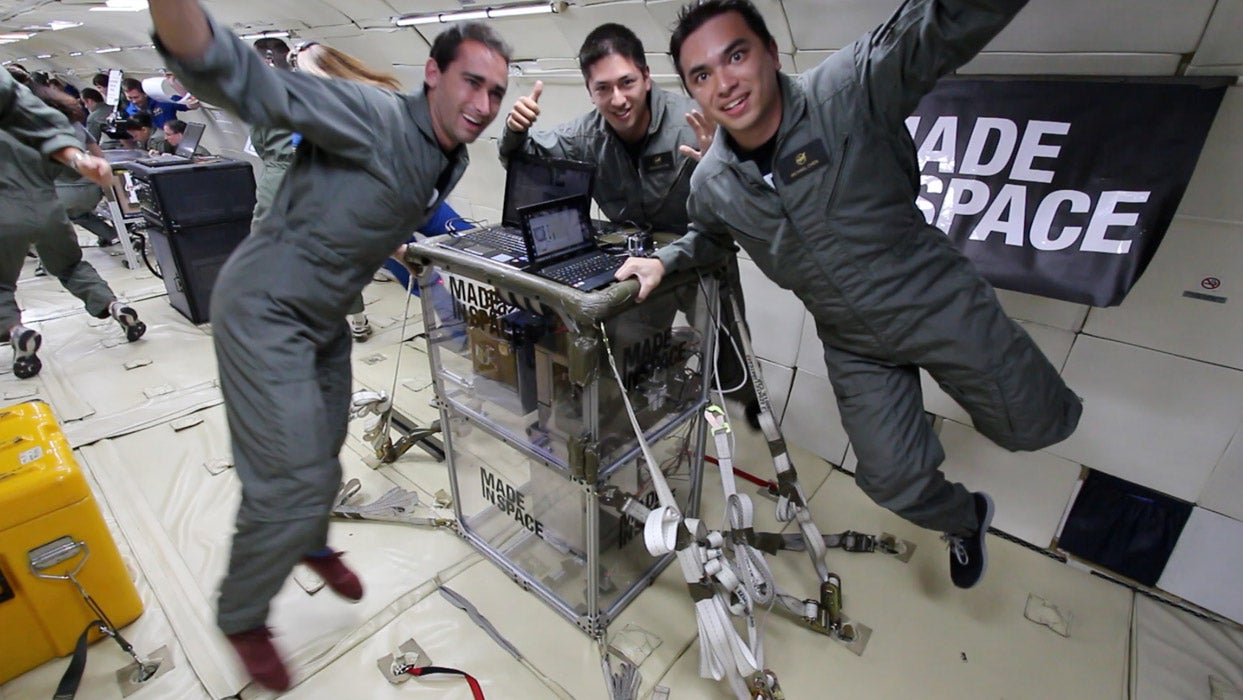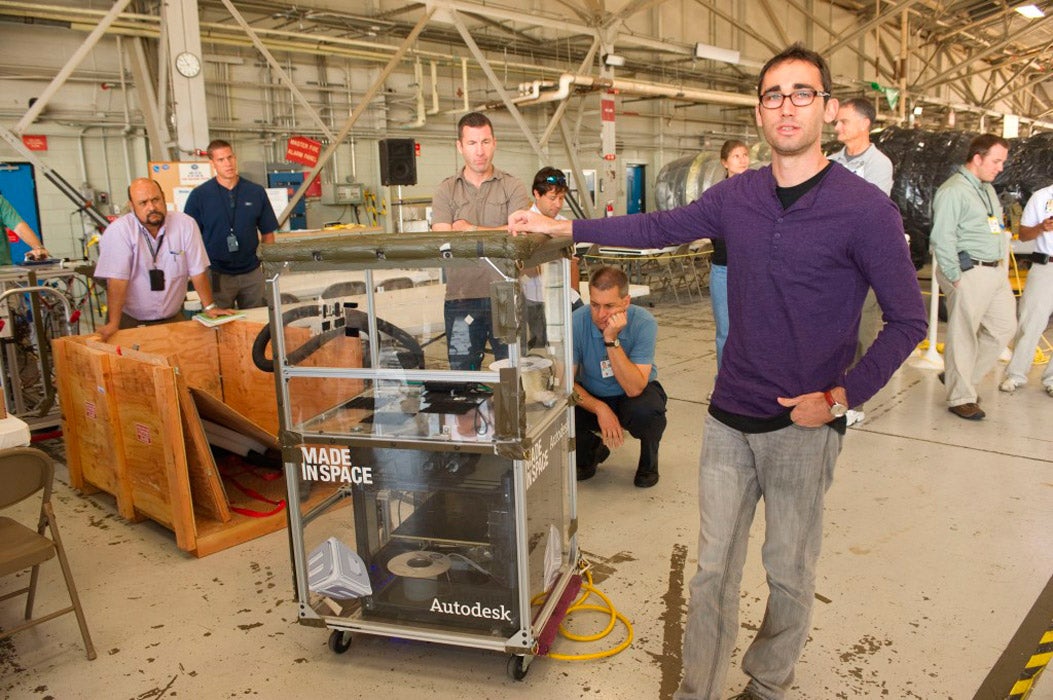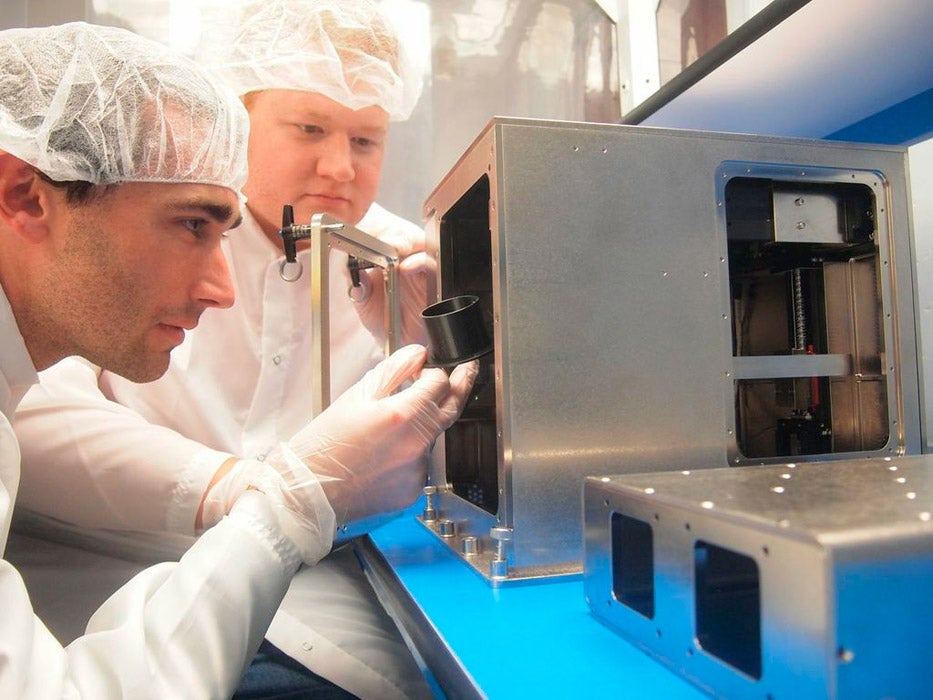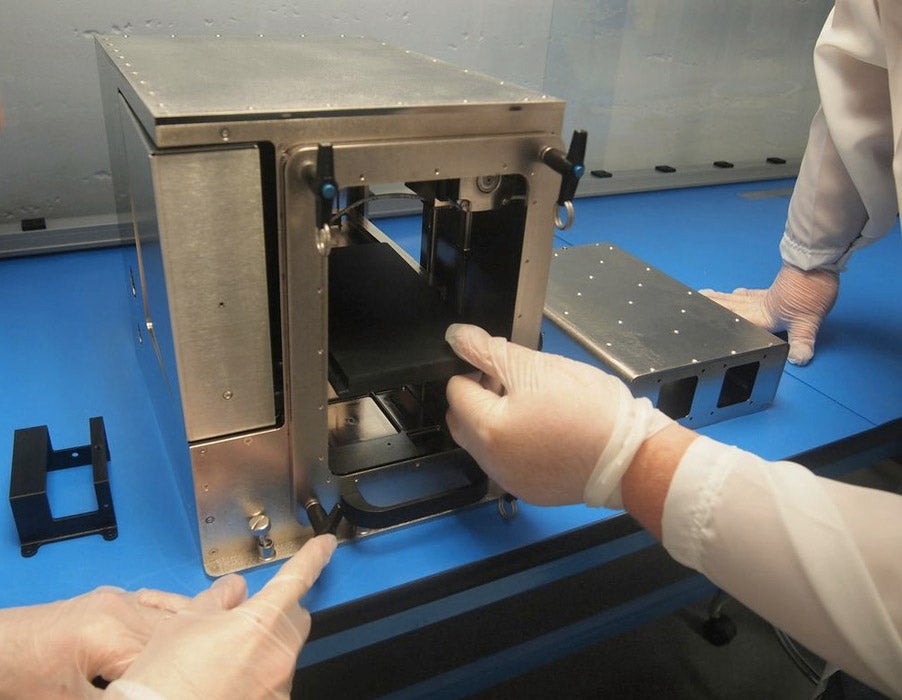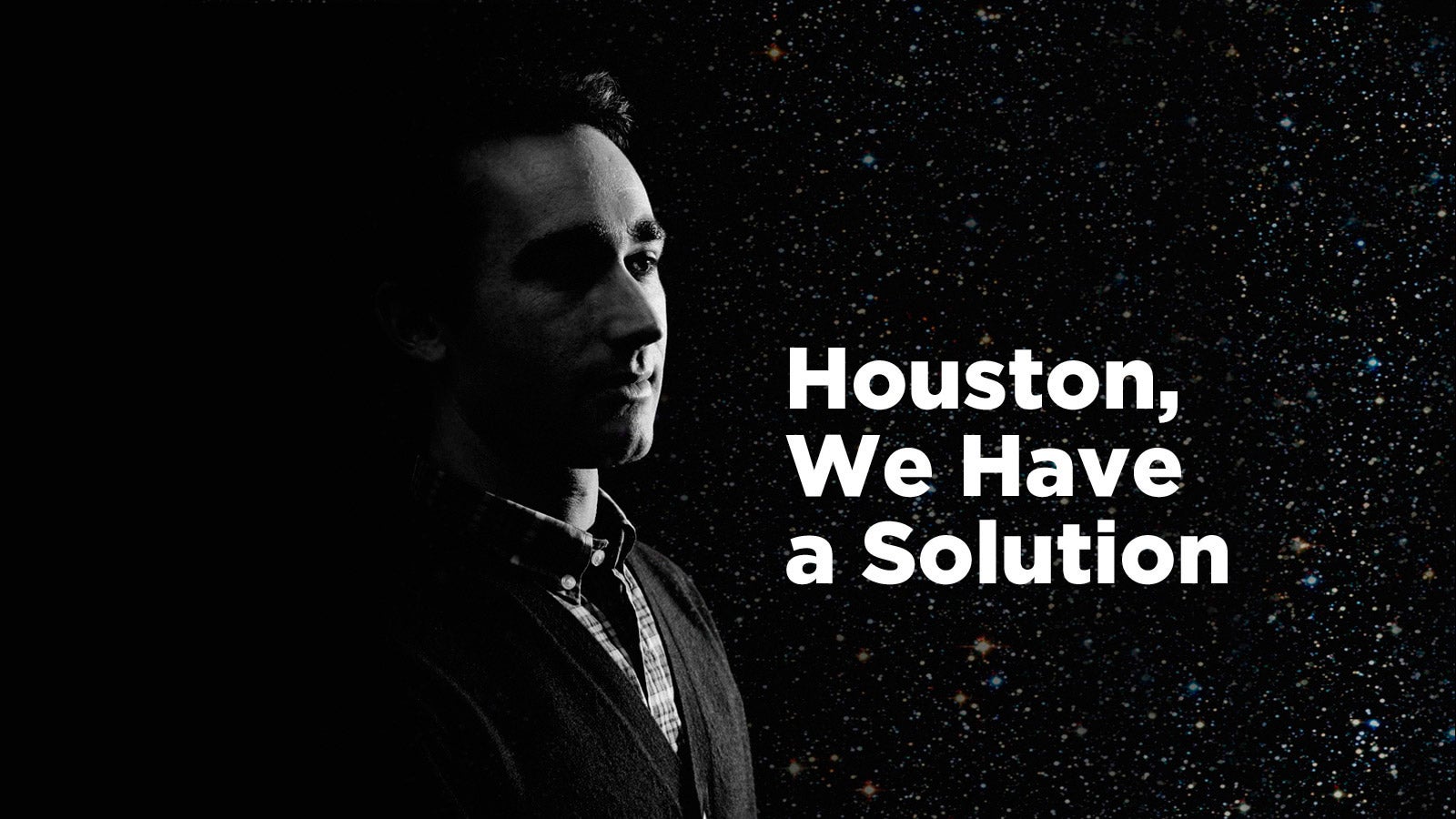
Jason Dunn ’07: 3D Printing for the International Space Station
Spring 2014
A self-described “space nut,” Dunn is catalyzing a technological advance that he believes will lead humanity to colonize Mars. The company he co-founded and serves as chief technical officer, Made in Space, will install the first 3-D printer on the International Space Station (ISS) this fall. Think of it as the Star Trek “replicator” brought to reality. If the experiment goes as planned, future astronauts will use his machine to create spare parts, tools and even complex machines like satellites on their way beyond the solar system.
“We all remember the famous line, ‘Houston, we’ve had a problem.’ We looked at that square filter that [the Apollo 13 astronauts] had to fit into a round hole and joked that if the crew had had a 3-D printer, maybe they would have followed with ‘Houston, we have a solution.’ One of our engineers designed an adapter in an hour, then sent it to the 3-D printer. By the end of the day, we had it printed, had a filter plugged into it, and it was functional. It turned out to be a really good example. And NASA loves it too.”
“My partners and I were focused on problems that the space industry has always had. We recognized that everything we’ve ever put into space came from Earth. That really is the underlying bottleneck — the humungous amount of energy required to get things into space. Recognizing that, we came upon the notion of manufacturing in space.”
“The idea of manufacturing in space isn’t new. It’s been going on since the ’70s in planning and before that in science fiction. A 3-D printer is basically a robot that can build stuff.”
“What 3-D printing enables is a better supply chain. All you have to do is email the digital blueprint and build it on the spot. We call it emailing hardware to space. A 3-D printer on the ISS may actually be what makes a Mars mission possible.”
“NASA is doing today what it should’ve done a long time ago — become a government agency that helps to commercialize the space industry. NASA realized that a commercial company could do what they were doing in ways that are more affordable and with lower risk. The Internet is a good example of this. Originally it was ARPANET, and was used by the government on a small scale. When it became accessible to everyone, we started to see this huge boom.”
“Failure is the Silicon Valley mindset — fail early, fail often. But it’s a new idea for the space industry. Without failure as an option, taking risks isn’t an option. It’s through failure that we learn how to succeed. We see failure as iteration. It’s the acceptance that the quickest way to succeed is to iterate as quickly as possible.”
“I’m watching 23-year-olds build multibillion-dollar Internet companies that completely demolish corporations. This is unprecedented. But we can do more than just build apps. We can focus that energy on solving really big problems and making the world a better place. You can still do well for yourself by doing good for others.”
“In my lifetime, I want to see people living in space — not in a little metal cylinder 400 km above us like the International Space Station – but really living out there, being multiplanetary. I think it’s possible.”
In 2011, Made in Space, Inc. was awarded a test flight aboard NASA's zero-gravity training jet — aka "The Vomit Comet" — for the purpose of testing how existing 3D printers would function in the weightlessness of space.
Since commercial 3D printers are designed to function on earth where gravity affects all aspects of their performance, Dunn (left) and his team had to retrofit the machines to operate in in zero gravity, where even temperatures are affected.
"We had to find clever ways to keep the hot parts of the printer hot and the cold parts cold," Dunn explains. "There are about two-dozen technologies that we’ve filed patents for that are all very specific to make a printer work not just in zero gravity, but in the extreme environment of the space station."
Of the 12 commercial machines tested, none performed up to expectations. "With all the problems we ran into, it turned out that we had to design a printer from ground up," Dunn says. "Now we’re looking at where we can bring this technology back to the ground to benefit other industries."
"Weightlessness is absolutely, hands-down the most enjoyable experience of my life," Dunn says. "You’re body adapts almost instantly. It feels as if we were supposed to be in that environment all along."
